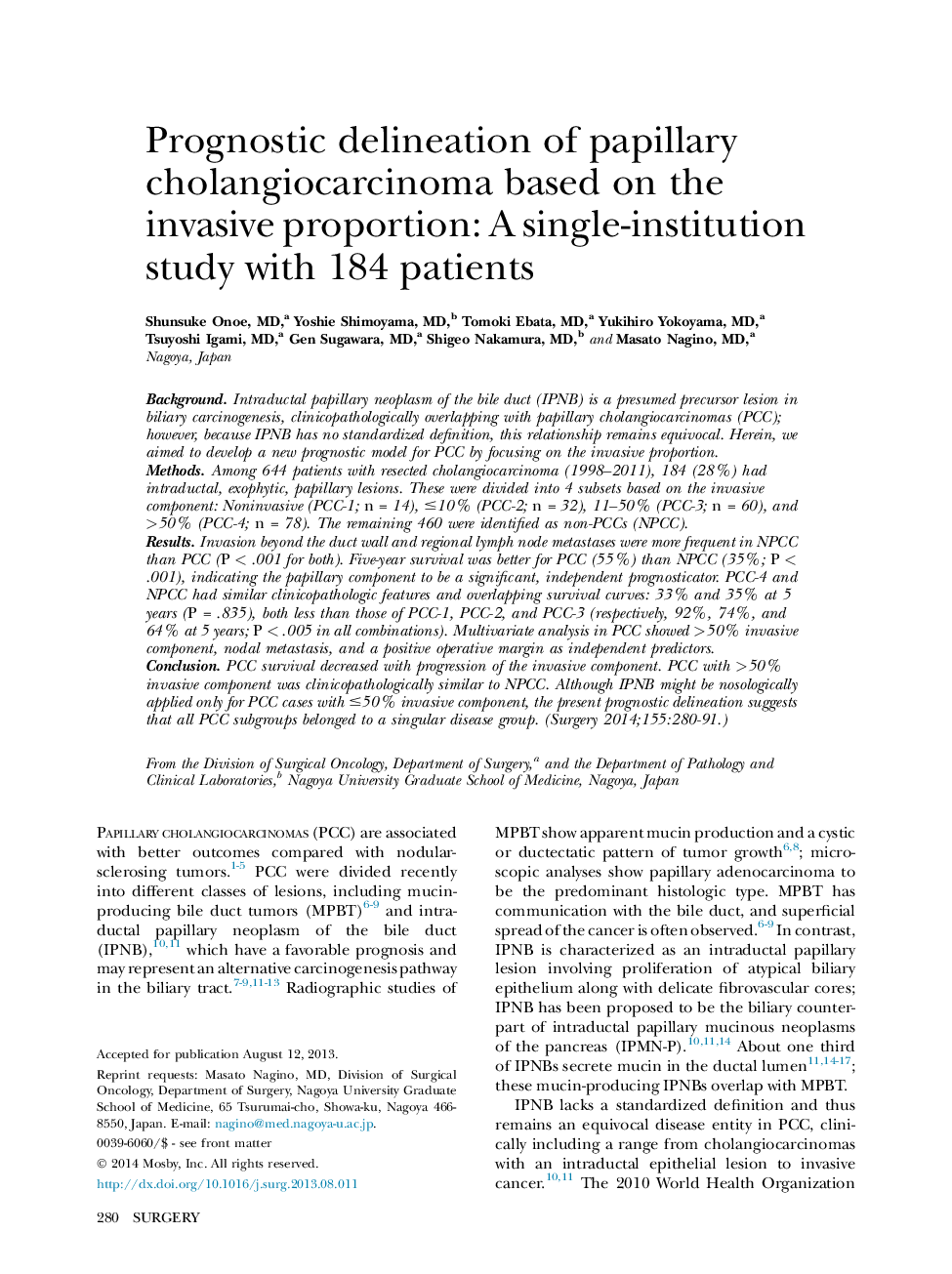| Article ID | Journal | Published Year | Pages | File Type |
|---|---|---|---|---|
| 4308234 | Surgery | 2014 | 12 Pages |
BackgroundIntraductal papillary neoplasm of the bile duct (IPNB) is a presumed precursor lesion in biliary carcinogenesis, clinicopathologically overlapping with papillary cholangiocarcinomas (PCC); however, because IPNB has no standardized definition, this relationship remains equivocal. Herein, we aimed to develop a new prognostic model for PCC by focusing on the invasive proportion.MethodsAmong 644 patients with resected cholangiocarcinoma (1998–2011), 184 (28%) had intraductal, exophytic, papillary lesions. These were divided into 4 subsets based on the invasive component: Noninvasive (PCC-1; n = 14), ≤10% (PCC-2; n = 32), 11–50% (PCC-3; n = 60), and >50% (PCC-4; n = 78). The remaining 460 were identified as non-PCCs (NPCC).ResultsInvasion beyond the duct wall and regional lymph node metastases were more frequent in NPCC than PCC (P < .001 for both). Five-year survival was better for PCC (55%) than NPCC (35%; P < .001), indicating the papillary component to be a significant, independent prognosticator. PCC-4 and NPCC had similar clinicopathologic features and overlapping survival curves: 33% and 35% at 5 years (P = .835), both less than those of PCC-1, PCC-2, and PCC-3 (respectively, 92%, 74%, and 64% at 5 years; P < .005 in all combinations). Multivariate analysis in PCC showed >50% invasive component, nodal metastasis, and a positive operative margin as independent predictors.ConclusionPCC survival decreased with progression of the invasive component. PCC with >50% invasive component was clinicopathologically similar to NPCC. Although IPNB might be nosologically applied only for PCC cases with ≤50% invasive component, the present prognostic delineation suggests that all PCC subgroups belonged to a singular disease group.
